Frédéric Baudron
Systems Agronomist
French Agricultural Research Centre for International Development (Cirad)
Biography
Frédéric Baudron is a Senior Scientist working for the French Agricultural Research Centre for International Development (Cirad), based in Montpellier, France. Prior to this, he was a Principal Scientist working for the International Maize and Wheat Improvement Center (CIMMYT) based first in Addis Ababa, Ethiopia (from 2011 to 2016) and later in Harare, Zimbabwe (from 2016 to 2023).
Trained as a tropical agronomist in France, he specialized as a livestock scientist and started his career with a focus on the interface between people (mainly farmers) and wildlife in Zimbabwe (and neighbouring countries). He then carried his PhD on plant production systems at the University of Wageningen (The Netherlands) and later obtained his Habilitation to Direct Research from the University of Montpellier (France).
He has been involved in a number of research projects in Congo, Ethiopia, Kenya, Rwanda, Tanzania, Zambia, Malawi and Zimbabwe. He has more than 23 years of experience developing solutions with and for smallholders in sub-Saharan Africa.
- Farming system research
- Sustainable intensification
- Agriculture-biodiversity nexus
- Appropriate mechanization
- Participatory innovation development
- Agronomy-at-scale
- Roots and tubers
HDR in Life Science, 2025
Université de Montpellier, France
PhD in Production Ecology and Resource Conservation, 2011
Wageningen University, The Netherlands
Diploma of Specialized Agronomy (Master of Science) in Livestock Science, 2001
AgroParisTech, France
Diploma of General Agronomy, 2000
SupAgro Montpellier, France
Skills
90%
70%
60%
30%
30%
70%
70%
80%
50%
Experience
Projects
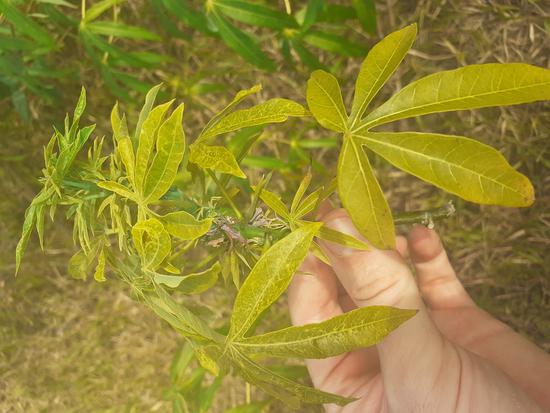
MASA DECODE
The project ‘Détection précoce et Réponse rapide: Maladie du balai de sorcière du Manioc’ (DECODE) is gathering urgently needed data on the distribution and impact of the Cassava Witches’ Broom disease (CWBD), an emerging disease in French Guiana as well as Brazil, and evaluating the risk for other high value crops (such as cocoa a,d cupuaçu); this project will provide the basis for a coordinated response by the Direction Générale de l’Alimentation, in conjunction with operators, researchers, farmers and local authorities, to implement effective containment, management and control strategies in French Guiana.
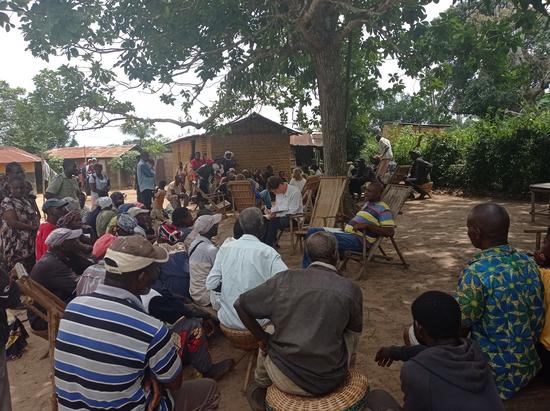
CAFI PUDT
The Republic of Congo envisions to diversify its economy by developing environmentally friendly farming, to contribute to food self-sufficiency and to improve the living standards of the population. Fulfilling this objective requires guidance for the spatial allocation of agricultural activities, conservation areas and infrastructures, in order to minimize trade-offs between productivity, economic profitability, biodiversity conservation, and other sectors of activity such as mining, forestry, while acknowledging the economic development goal of Congo, requiring new roads, industries transformation, and social infrastructure; funded by the Central African Forest Initiative (CAFI), the ‘Programme d’Utilisation Durable des Terres’ (2022-2026) aims at establishing a land-use plan at national and department levels, sustainably managing forests, delineating the agricultural domains and guiding the implementation of zero-deforestation farming, and supplying Brazzaville and Pointe-Noire in sustainable energies.
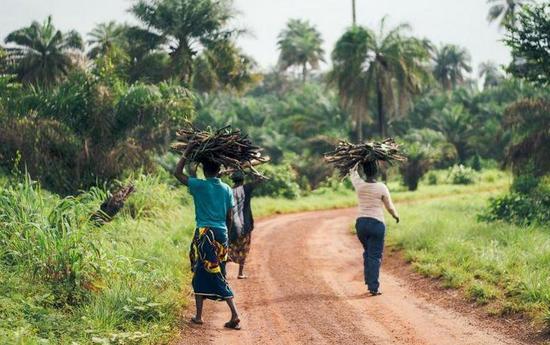
EU CANALLS
The Driving agroecological transitions in the humid tropics of Central and Eastern Africa through traNsdisciplinary Agroecology Living LabS (CANALLS) project, funded by the European Union (2022-2026), aims at driving agroecological transitions in the humid tropics of Central and Eastern Africa via 8 ‘Agroecology Living Labs’ located in DRC, Burundi, Cameroon and Rwanda; CANALLS engage in multi-actor collaboration with rural communities, advisory services and governments to develop a holistic assessment framework and evaluate the socio-economic and environmental performance of the co-created practices; the project also builds capacity, shares knowledge, and delivers fair, inclusive and sustainable business models along with services and tools to facilitate access to markets and enhance demand for agroecological products.
OneCGIAR Agroecology Initiative
Agroecology is an approach to food production that harnesses nature’s goods and services whilst minimizing adverse environmental impacts, and improves farmer-consumer connectivity, knowledge co-creation and inclusive relationships among food system actors; it is gaining prominence in scientific, agricultural and political discourse.
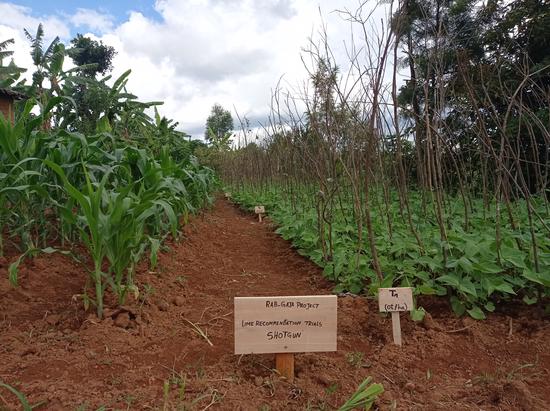
BMGF GAIA
With an estimated 15% of all agricultural soils in Africa being affected, soil acidity is a major constraint to (current and future) crop production on the continent. As a response, several governments in East Africa - including Ethiopia, Kenya, Tanzania, and Rwanda - have initiated strategic plans toward substantial public investments for the rehabilitation of acid soils.
Featured Publications

Acid soils are widespread across sub-Saharan Africa. Agricultural lime can be used to alleviate production constraints associated with soil acidity, but lime is not widely available in the region, and it is unclear if applying it would be profitable. Using lime requirement models and crop yield responses to soil acidity modelled as plateau–linear decay functions, we estimated the profitability of acid soil remediation through liming. Crop yield loss to soil acidity occurs on 32.7 Mha, or 23% of sub-Saharan Africa’s cropland. The burden of acid soils is US$6.0 billion (6% of the current production value), and 75% of that could be profitably alleviated. Under prevailing conditions, liming would be profitable in the year of application on 6.2 Mha (with an average profitability of US$278 ha−1) and on 8.8 Mha when lime’s long-term effect is considered. Intensification of crop production and lower relative lime/output prices could make liming profitable on more cropland."
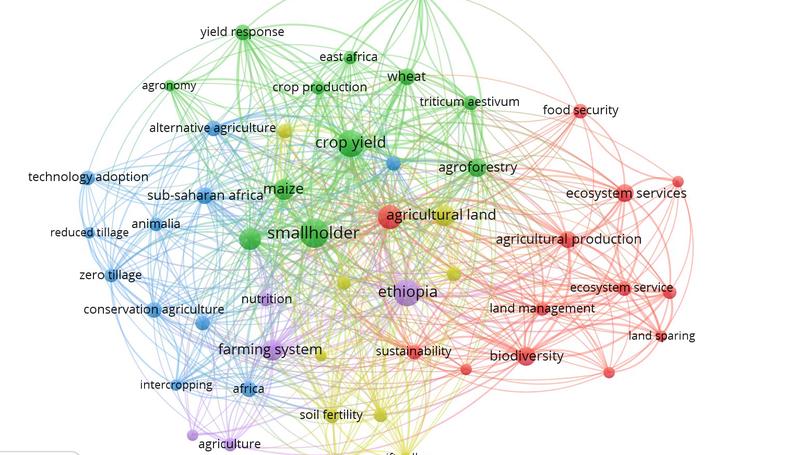
We are facing a biodiversity crisis, which is largely driven by the way we produce food. In response, various approaches to ‘biodiversity-smart farming’ have been proposed, sparking debates, especially in sub-Saharan Africa, a region that was largely bypassed by the Green Revolution and is expected to experience significant biodiversity loss due to agricultural expansion. Systems agronomy, a methodological approach geared towards the design of a broad basket of options for diverse farming conditions and diverse contexts, has a critical role to play in informing these debates. My past research has explored this topic through four key directions. First, I critically examined conservation agriculture as an example of biodiversity-smart farming during my early career. Second, I explored the landscape-scale as the critical scale for biodiversity-smart farming. Third, I emphasised the need for broader evaluation metrics beyond just yield, including labour and nutrition. Finally, my more recent work aimed at guiding and prioritising interventions, whether biodiversity-smart or more broadly development-oriented. Looking ahead, I propose to expand my research in three key areas. First, I will apply systems agronomy methods developed for cereal-based systems to roots-and-tuber crop-based systems, which are critical for biodiversity-smart farming in sub-Saharan Africa. Second, I will advance research on multi-functional landscapes that work for people and nature, addressing what remains a gap in development-oriented agronomy. Lastly, while continuing to investigate the ‘where,’ ‘for whom,’ and ‘what’ of interventions, I will also explore the ‘how’, examining how systems agronomy can better inform co-design processes.

An innovative methodological approach combining statistical typologies and stochastic frontier analysis was applied to data collected from 1840 mixed crop-livestock farms in six districts of Zimbabwe, representative of semi-arid areas of the country. The average annual cereal production was 362 kg farm-1, and the average annual livestock offtake was 0.64 +/- 1.32 Tropical Livestock Units (TLU) farm-1. Our results demonstrate there is scope to increase cereal and livestock production by 90.7% and 111.9% relative to current production levels, respectively, with more efficient use of existing resources and technologies. Rainfall was found to have a strong effect on cereal production, highlighting the need for climate-smart practices. Livestock mortality (0.59 +/- 1.62 TLU farm-1) was found to be in the same order of magnitude as livestock offtake (0.64 +/- 1.32 TLU farm-1). Cereal production was supported by livestock, demonstrating the importance of crop-livestock interactions in these mixed farming systems. Three farm types were identified in our analysis. Crop-oriented mixed farms (31%) are likely to be the ones most responsive to crop-specific interventions e.g., crop rotation and integrated pest management. Livestock-oriented mixed farms (34%) are likely to benefit the most from livestock-specific interventions, e.g., home feed. Mixed farms dependent on off-farm activities (36% of the sample) may require nutrition-sensitive and laboursaving sustainable intensification technologies to benefit from their limited resources. Reducing cattle mortality is a priority for all three farm types. The method proposed here could be adapted to other contexts characterized by heterogeneous farming populations to target interventions.
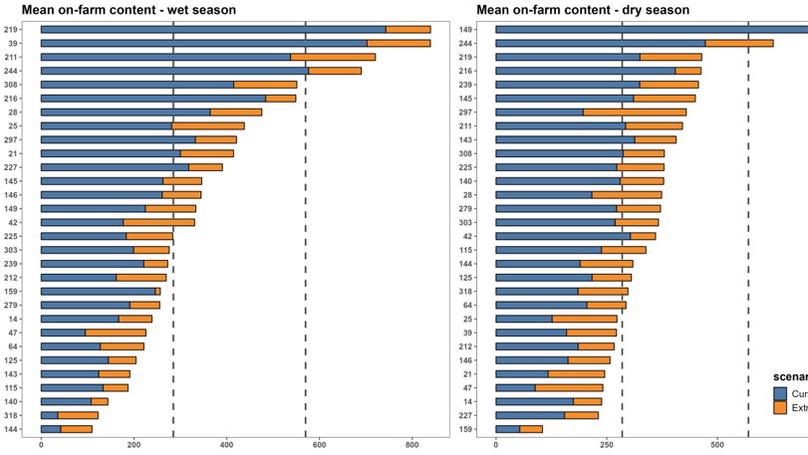
Background. Evidence of the effectiveness of biofortified maize with higher provitamin A (PVA) to address vitamin A deficiency in rural Africa remains scant. Objectives: This study projects the impact of adopting PVA maize for a diversity of households in an area typical of rural Zimbabwe and models the cost and composition of diets adequate in vitamin A. Methods. Household-level weighed food records were generated from 30 rural households during a week in April and November 2021. Weekly household intakes were calculated, as well as indicative costs of diets using data from market surveys. The impact of PVA maize adoption was modeled assuming all maize products contained observed vitamin A concentrations. The composition and cost of the least expensive indicative diets adequate in vitamin A were calculated using linear programming. Results. Very few households would reach adequate intake of vitamin A with the consumption of PVA maize. However, from a current situation of 33%, 50%–70% of households were projected to reach =< 50% of their requirements (the target of PVA), even with the modest vitamin A concentrations achieved on-farm (mean of 28.3 μg RAE per 100 g). This proportion would increase if higher concentrations recorded on-station were achieved. The estimated daily costs of current diets (mean +/- standard deviation) were USD 1.43 +/- 0.59 in the wet season and USD 0.96 +/- 0.40 in the dry season. By comparison, optimization models suggest that diets adequate in vitamin A could be achieved at daily costs of USD 0.97 and USD 0.79 in the wet and dry seasons, respectively. Conclusions. The adoption of PVA maize would bring a substantial improvement in vitamin A intake in rural Zimbabwe but should be combined with other interventions (e.g., diet diversification) to fully address vitamin A deficiency.
Recent Publications
Contact
- frederic.baudon@cirad.fr
- +33 (0) 4 67 61 71 67
- TA B 115/02 - Avenue Agropolis, Montpellier cedex 5, 34398
- DM Me
- Skype Me



















